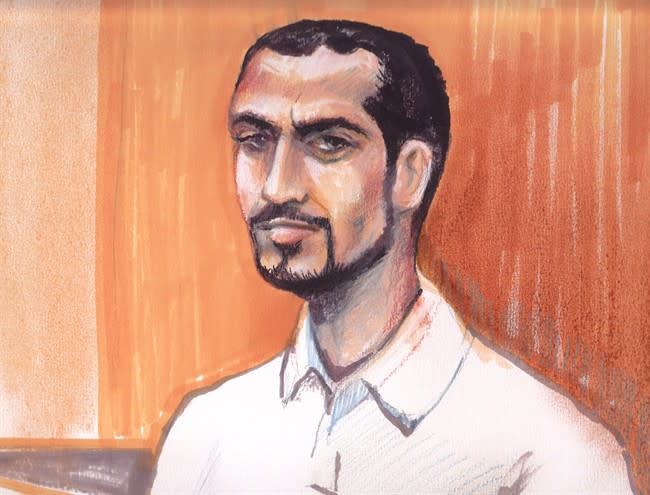 Daily Brew
Daily BrewCanada wants to jail terrorists, but struggles with how to deal with them once they're out

Stephen Harper’s Conservative government is prepared to lock up anyone proven to be involved in terrorism, or planning to head abroad to fight. But is it ready for when those erstwhile jihadis eventually are released?
The short answer is no, it’s not.
While passing tougher laws to prosecute those who might want to go overseas to join Islamist terror groups, the government has apparently not set up specific programs within the federal prison system to help keep them from rejoining the fight.
Anyone imprisoned for terror-related offences has access to the same rehabilitation programs available to conventional criminals. But there are no programs aimed specifically at terrorists to wean them away from extremist ideology and reintegrate them into Canadian society.
They are a special breed. They are not like your regular criminal so they need particular intervention.
—Dr. Wagdy Loza, former chief psychologist at Kingston Penitentiary
No one at the Correctional Service of Canada (CSC) was available to be interviewed but a media spokesman said via email to Yahoo Canada News “ideologically motivated offenders” are dealt with through current programs.
“CSC addresses the challenges linked to radicalization through existing case-management practices, which is individualized for each offender through a correctional plan,” the email said.
“This includes intervention through participation in CSC’s nationally recognized correctional programs, through psychology services and through education and employment programs.”
Is that enough?
Other countries have terrorist rehab programs and although the success rate has been hard to measure, experts say targeted approaches are crucial to at least trying to disengage terrorists from their former life.

From the notorious Omar Khadr, repatriated from Guantanamo Bay to Canadian custody in 2010, to a growing string of convicted terror suspects now in federal prison and others likely to fall afoul of new legislation criminalizing travel for the purposes of aiding a listed terror group, Canada stands to see a rise in the number of inmates imprisoned for terror-related crimes.
Most, including Khadr, eventually will complete their sentences or be eligible for parole. But the CSC is unprepared to deal with the issues that put them behind bars, said Dr. Wagdy Loza, former chief psychologist at Kingston Penitentiary.
“We need to be ready, we need to have programs for these people who are convicted of terrorism or extremism,” Loza, now an adjunct professor at Queen’s University, told Yahoo Canada News.
Related:
RCMP investigating suspected extremists heading abroad, returning from fights
What will Canada's combat mission in Iraq be, and how dangerous is it?
The reality of 'terror tourism' shown as CSIS tracks 80 terror suspects in Canada
The CSC has programs designed for sexual offenders, for substance abusers, for those imprisoned for domestic violence, but nothing to address the motivations of terrorists, he said.
“They are a special breed,” said Loza, who has 35 years of experience working with inmates and studied the psychology of extremists and terrorists. “They are not like your regular criminal so they need particular intervention.”
The gap between the Conservative government’s desire to jail terrorists and its ability to deal with them afterward is just part of a larger problem with the CSC’s ability to deliver rehabilitation programs, according to the Correctional Investigator Howard Sapers, the prison system’s ombudsman.
Sapers said in an interview he’s aware the CSC offers nothing aimed at terrorists.
“There are some training and awareness initiatives in terms of staff,” he said. “But as far as I know there’s been no commitment to develop specific terrorism-related or de-radicalization-related interventions.”
The CSC does a good job developing effective programs to meet identified risks but its capacity to deliver them has eroded as the Harper government’s commitment to imprisoning more offenders has boosted the inmate population by 17 per cent in the last five years, said Sapers.
“My concern is that the service has to increase its ability to meet the complex program challenges that the current population have,” he said.
The CSC spends just five per cent of its $2.4-billion budget on rehabilitation. Inmates with mental health problems, with substance-abuse issues, those whose criminality might be related to being victims themselves, all need attention, said Sapers. As well, the system now has a more diverse cultural mix and a rising number of aboriginal women inmates, putting more strains on the service’s budget.
“Terrorist related charges, thankfully, are few and far between,” said Sapers.
Convicted terrorists undergo screening when they’re first imprisoned to help officers prepare case plans in areas such as job training, anger management and other life skills. But just how useful this menu of program options is in attacking extremist beliefs is questionable.
“Tackling what prompts people to join terrorist organizations is outside of the normative rehabilitation program,” said Catherine Latimer, executive director of the John Howard Society, which works with inmates to help smooth their transition into society.
“You’re trying to correct the criminal behaviour, and it would be very difficult to do that without addressing what prompts people to want to participate in terrorist activities.”

The low priority Ottawa seems to place on rehabilitating terrorists is perhaps not surprising. Western countries have done little or nothing to address the problem of what to do with identified extremists in their midst beyond jailing them, said John G. Horgan, director of the Center for Terrorism and Security Studies at the University of Massachusetts Lowell.
“In a nutshell I don’t think we have even begun to have this discussion,” said Horgan, who’s interviewed militants in a half-dozen countries and now is researching how people disengage from terrorist groups.
“If we were talking about crime we wouldn’t be having the same sort of discussion. That is because we haven’t a clue of how to engage in risk assessment of terrorists.”
Horgan has investigated programs aimed at rehabilitating terrorists in several countries, including Indonesia, Columbia, Saudi Arabia and Northern Ireland.
There’s no single model Canada could emulate in part because the approach often depends on a country’s makeup and even then success seems hard to measure, said Horgan.
For instance, Saudi Arabia’s intensive, multi-pronged counseling program that involved religious scholars and social supports looked promising until a prominent al-Qaeda figure and former Guantanamo detainee, Ibrahim al-Rubaish, who was enrolled in the program took off for Yemen. He and several other Saudi Guantanamo alumni joined al-Qaeda in the Arabian Peninsula.
Those who go abroad to fight for a cause add another layer of complexity. So do individual motivations, which can range from strongly held religious beliefs to a desire to belong somewhere or simply to have an adventure, or any combination of those things. All should factor in a reintegration plan.
Many programs attempt to persuade extremists their ideas are wrongheaded, perhaps based on misinterpretations of religious tenets.
Horgan questions that concept of de-radicalization.
“It’s a non-starter if we somehow think we’re going to rob people of the legitimacy of their views that led them to go in the first place,” he said.
Many countries have successfully reintegrated former combatants into society without forcing them to disavow their beliefs, he said. They might do it but their sincerity can be doubtful.
“We will lose if we start talking about de-radicalization; that is not the goal here at all,” Horgan said. “It is about safe reintegration and ultimately informed risk assessment.
“We are going to have to figure out how we can screen out, let’s say, the insincere participants versus those who have been truly disillusioned and want to come back home.”
Loza, however, said he believes you have to challenge an extremist’s core beliefs for any chance to detach him from the path of terrorism. That means employing cultural and religious knowledge.
“Designing programs for people who believe they are an agent for Allah or acting for Allah is very, very difficult,” he said. “It needs special expertise, you need people who understand what is it that they are talking about.”
Canada has already had one notable failure. Ali Mohamed Dirie, one of the so-called Toronto 18, who served a total of seven years (five in pretrial custody) for his part in a plot to blow up Parliament and attack politicians, was released in October 2011. He reportedly managed to leave Canada within a year and was reported killed in Syria last year.

Dirie’s cases highlights the problem of monitoring suspected terrorists, whether newly released from Canadian prisons or returning from fighting abroad.
“My deeper fear is we’re not prepared for adequate and systematic risk assessment for returnees, even if the numbers are small,” said Horgan.
Sapers also noted an increased percentage of offenders now are being freed on statutory release after serving two thirds of their sentence or warrant expiry – meaning they served all of their time – instead of getting parole.
“That’s really a new phenomenon in Canadian corrections,” he said. “Our system was really designed based on gradual supervised release and that’s happening less and less frequently.
“So if offenders continue to present some risk past warrant expiry or past their statutory release date you would want to have some form of surveillance or monitoring or supervision. But your opportunities to do that are much reduced [without parole-imposed conditions].”
The CSC said in its email police can go to court to obtain a peace bond under Section 810.01 of the Criminal Code, which would impose restrictions on offenders who’ve completed their sentences but are considered at risk to commit a criminal act such as terrorism.n The onus falls on local police to monitor them. But for how long?
“I don’t think anyone has a real answer for that,” said Horgan. “Is it short term, is it imminent, is it lifetime?”



